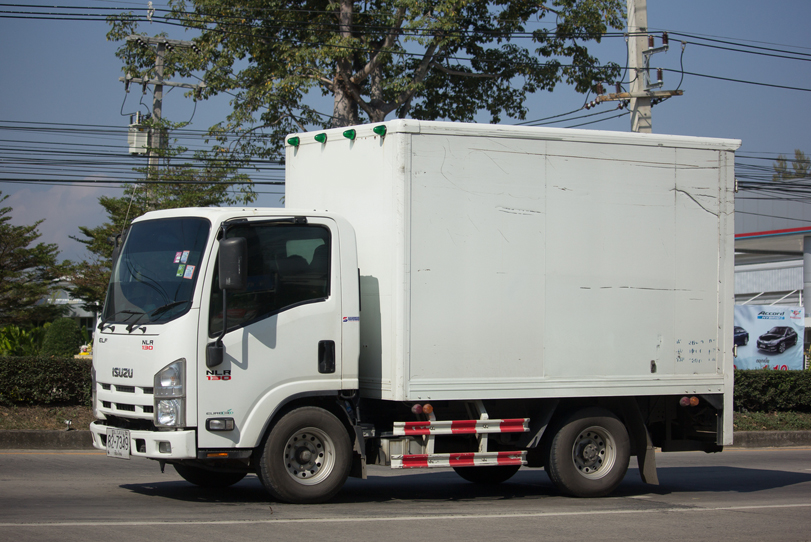The article explores the aspects of cold chain logistics in the global food and pharmaceutical industry.
Nowadays, the cold chain logistics tend to play a vital role in the food industry as well as the pharmaceutical industry across the world. The suppliers of these industries heavily rely on the cold chain to ensure a successful shipment. A basic cold chain refers to the kind of temperature-controlled supply chain of food and pharmaceutical industries. A supply chain involves firms, people, activities, information and resources in order to carry out a process through which the products can be delivered from the respective supplier to the end customer. The sensitive products such as medicinal drugs, biological products and commodities of the food industry need constant refrigeration, proper storage and appliances for distribution activities as well as to maintain a specified low temperature range. To ensure lesser chances of compromising any shipment, logistics in cold chain assemble all the insights to keep an eye on the shipping networks and to determine specific risks even before the product is shipped.
The basic elements of a cold chain are storage, packaging, monitoring, transporting, custom clearance, product handling and delivery. However, the cold chain logistic is an expensive system, as it ensures the most desired goods with special packaging and storage support. In addition, each sector of the cold chain, starting from the point of harvesting the product to the point at which it is sold, possesses specific responsibilities on precise parameters such as safety, quality of global standards, greater efficiency, and investments, since any slight breakage in the cold chain may hamper the customer satisfaction to a great extent.
Type of commodities in cold chain logistics market
The cold chain logistics market consists of three types of food products i.e., perishable goods, semi-perishable goods, and non-perishable goods. Moreover, the nature of the cold chain is different in each category of products.
- Perishable goods are the food items which are highly moisture and get degraded very easily within a short time period, if kept in room temperature, which is why; these products require instant storage in specific temperature to avoid any spoilage. The chilled storage maintains a precise temperature between -1oC to 12oC whereas for frozen storage the temperature is maintained below -18°C. Such type of goods includes sensitive foods like dairy products, eggs, meats, fishes, fruits and vegetables etc.
- Semi-perishable goods consist of foods like onions, potatoes, breads, cereal and pulse products etc. which have a limited shelf life but still do not need an immediate refrigeration.
- Non-perishable goods, on the other hand, are very flexible to store and carry as they have no moisture at all, need no refrigeration and yet have a long shelf life. Dried fruits, rice, powdered milk, sugar etc. are some of the examples of non-perishable goods.
Moreover, the cold chain logistics are not only used for the food purposes but also for transferring the pharmaceutical medicines and biological products like drugs, hormones, vaccines, antibiotics, blood and blood elements etc., which are extremely temperature sensitive and require storage in precise temperature standardisation in order to ensure efficiency.
Cold chain market scenario
The medical advancements and more agricultural productivity in the modern era have led to the rapid growth of population across every nation, which in turn, has increased the demand for perishable food items and pharmaceutical products among the consumers across the world. Mainly, rising demand for the perishable goods has influenced the world in international trading between countries, and thus, led to the requirement for the temperature-controlled system through the cold chain logistics in order to prevent the food losses.
However, many countries throughout the world have faced several challenges while implementing the cold chain logistics for their international trade. The factors like lack of awareness for managing the temperature sensitive devices by the stakeholders, lack of standardisation, improper storage handling, poor transport facilities, high operational cost, and lack of sufficient core infrastructure such as roads, drainage, water supply, gas supply, power supply, etc., have had a direct impact in their trading process.

Nevertheless, the government and other private key market players are constantly looking for numerous strategies, such as incorporating warehouses with refrigeration facilities to overcome such challenges, which subsequently, can drive the market with exponential growth of the cold chain logistics trend in the upcoming years. According to a report published by Allied Market Research, the global cold chain logistics market size is anticipated to register a significant CAGR from 2019-2026.
Temperature Handling
At the same time, measuring and monitoring the temperature is an essential part of the cold chain management and thus should be handled on priority. The temperature measurement is achieved by using appliances such as infrared thermometers, thermistors, thermocouples etc. In the past couple of years, the wide use of TTI or integrators has made the temperature handing process easier by reporting a visual and straight forward summary of the temperature history of the product. This special kind of device shows cumulative effect of temperature fluctuations and detect whether a product has surpassed the chain, positively or negatively, within the optimal temperature range.
COVID-19 impact on the cold chain logistics market
Unfortunately, the outbreak of the COVID- 19 pandemic has led to global lockdown, which gave way to several restrictions to industrial trade. This in turn, has adversely hampered the supply chain management of almost every industry across the globe. In the food and pharmaceutical sector, however, restricted trade has resulted in better storage facility for the products to increase their shelf life. This has, eventually, given a positive impact in the market by setting out a promising rise to the adoption rate of packaged food & beverage products among consumers, which fortunately, has encouraged the demand for cold chain warehousing across several nations. In a nutshell, the pandemic situation has had a mixed impact while disrupting the supply chain and also influencing the sector with better storage facility and propelling the demand in the near future.
Cookie Consent
We use cookies to personalize your experience. By continuing to visit this website you agree to our Terms & Conditions, Privacy Policy and Cookie Policy.















